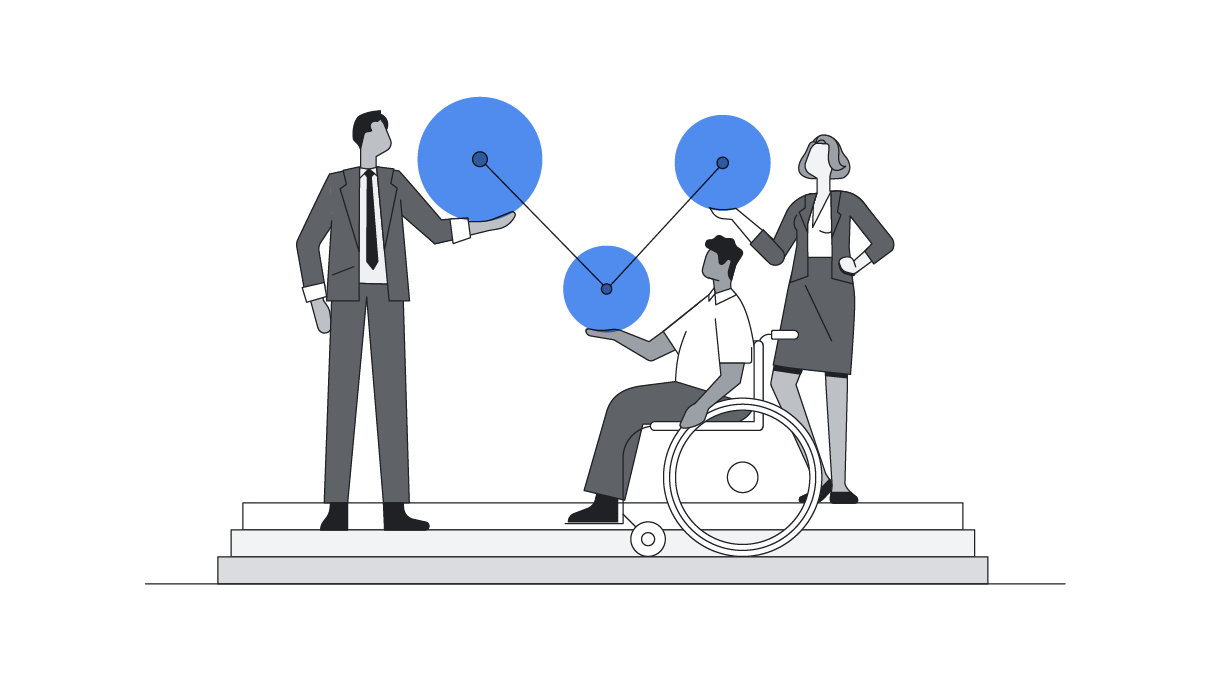Following on from our first-of-its-kind investigation into the state of omni-channel experiences among European retailers, we look at some Google tools and advertising solutions that are already helping businesses create a more fluid experience for customers.
While addressing some of the criteria in our study requires longer-term investments in technology and infrastructure, there’s still a lot that businesses can take action on today. Google provides a suite of simple-to-use products aimed at improving the omni-channel experience - both in Ads and beyond - and in this article we’re going to look at a few.
The criteria used to measure cross-channel readiness cover different levels of sophistication, from good housekeeping to advanced integrations. Google’s omni-channel solutions also cover a range of use cases, from basic best practice to advanced integrations.
Covering The Basics
The first step in any cross-channel strategy is making sure that information about your physical stores can be found easily by people searching for them online.
Google My Business (GMB) allows retailers to take charge of what people see when their business is searched for online. A listing on GMB helps people find your business across Google Search and Google Maps, and provides a free way to engage with customers whether they’re on phone, tablet or computer.
Businesses are able to list their opening hours for individual store locations, upload photographs of storefronts, read and respond to online reviews where necessary, and integrate with their Google Ads account for an enriched dataset. Although almost all of the brands in our study had activated GMB, we found that 50% had not added a single photo to help shoppers understand what to expect while visiting a store. This is a real untapped opportunity, as high quality imagery can be decisive when people are choosing whether to visit a store.
Bringing In-Store Inventory Online
Creating a true omni-channel experience means allowing customers to move seamlessly between physical, online and mobile environments. Product Listing Ads and Local Inventory Ads facilitate this by enabling retailers to create online and mobile advertising that feature specific products and include reference to local availability.
Retailers can upload feeds of their products and inventory levels through the Google Merchant Center, where they can also add detailed product descriptions, pricing and associated metadata. There are five best practices to follow for shopping campaigns:
- Define your objectives
- Choose the right bid strategy
- Build a robust shopping campaign structure
- Differentiate bids based on audience
- Optimise for success
More about these best practices can be found here.
Location, Location, Location
Once you’ve taken care of the fundamentals, the next stage is to implement a solid local ads strategy to give customers the best chance of finding you. Local targeting features in Google Ads such as Bid-By-Distance and Proximity Targeting allow advertisers to target bids specifically at potential customers in the vicinity of a store, and who are looking for products and services like theirs. Location types available for targeting include postcodes, cities, countries and places of interest such as universities and airports.
Store-specific messaging can make all the difference in guiding a customer from an online search to a store visit. Use Location Extensions to customise your local creative by providing additional store details such as addresses and phone numbers. Local Ads can then enhance usability even further by providing click-to-call buttons on mobile and easy-to-access travel directions. A full best practice guide for driving offline sales with online ads can be found on the Google Ads Help site.
Mobile & Measurement
When users search on mobile they are often on the move with no time to hang around for pages to load. Having a fast mobile site is an essential component of any omni-channel strategy, and Test My Site is an excellent way to ensure that you’re meeting mobile speed expectations. The tool uses machine learning to measure mobile speed in real-world conditions, checks site design and coding for best practice, and makes detailed recommendations. With 82% of smartphone users consulting their device in-store before making a purchase,2 mobile speed has a serious impact way beyond mobile conversion rates.
Finally, understanding the true value of omni-channel requires accurate measurement. The Store Visits report in Google Ads uses anonymised, aggregated data to calculate the rate at which people who click on a retailer’s ad visit a physical store, giving a more complete picture of the visits driven by digital campaigns. Rounding out the picture are Shop Sales conversions, which allow retailers or their data partners to upload encrypted in-store conversion data to Google Ads for an accurate, omni-channel view of return-on-investment.
Omni-Channel Advertising in Practice
Below is a screenshot of an ad from #1 ranking retailer Bever for their store in Rotterdam. The Search query used was “Bever Rotterdam”, and the ad shows many of the recommendations from this article in action.

The ad headline contains the store location, and also mentions that a sale is on. The display URL mentions the store location, which is further reinforced in the ad body text. On the third line of the ad, Callout extensions provide additional useful information about the brand, such as safe payments, customer service hours, and the number of stores nationwide. Finally, Location extensions provide a link to Google Maps, while the Google My Business link shows opening hours and lets the user know that the store is currently closed.





